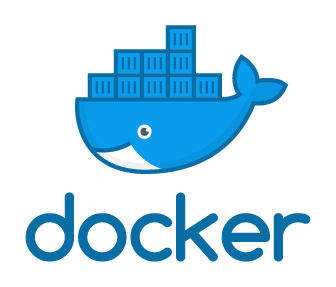If you find this useful, remember about giving a start ⭐ to this repo or share it 🔁
This is a complete stack for running builded Angular App into Docker containers using docker compose tool, with a proxy Nginx between front and back (conected to the DB container with Sequelize ORM).
It is composed by 4 containers:
angularfrontend, the one that runs the builded Angular APP in a container with Node and Nginx.nodebackend, a container with node runing and the ORM Sequelize conected to the "postgres" container.middlenginxthat handles the request with a proxy configuration, linking front and back.postgresstoring the PostgreSQL 14 databases.
-
You need Docker and Docker Compose where you are going to launch this so, if you do not have it... click HERE or go to the end of this
.md^^ -
Clone this rep.
-
Edit the
docker-compose.ymlwith your DB information. Notice that the configuration for the Postgres database, has information for another user and DB. In the01-init.shfile, that is indbdir, there is a configuration for adding the passwordpostgresto the postgres user and creating a new DB, calleddockerwith a new user with the same name and password. Change if you need to. Apart from this, modifies theph_hba.confaddinghost all all 0.0.0.0/0 md5so there is no problems with the conection of the database and the users. -
Run
docker compose upto check that everything runs correctly. If there it no errors, stop (ctrl+C) and delete containers withdocker compose down. Now you can run it withdocker compose up -d. This will run it in the background. -
To check that eveything is running correctly in the background, run
docker compose ps -aand you will see the running containers.
-
Run Docker Compose:
docker compose up -d/docker compose up -
Check Docker Compose's volumens status:
docker compose ps -a/docker compose ps -
Check Docker's images:
docker images -a -
Remove Docker's images:
docker rmi -f imageID1 imageID2 ...(-f = force) -
Enter to a Docker's volumen:
docker compose exec VolumenID sh/docker compose exec VolumenID bash -
Copy a file to the docker we want to:
docker cp file docker_id:/dir -
Remove all dangling (not tagged or associated with a container) containers, volumes, networks and images:
docker system prune -
Remove all unused containers and images with at least one container associated to them:
docker system prune -a -
Shows all unused local images:
docker images ls -f dangling=true -
Shows all unused local volumes:
docker volume ls -f dangling=true -
Remove all local volumes not used by at least one container:
docker volume prune
Adjust the installation to your OS. Here you have the one for Linux Mint (Ubuntu based)
-
Download and install Docker:
apt install docker -
Gives permisions so you can run it everywhere:
sudo usermod -aG docker $USER -
Starts Docker's service:
service docker start -
Starts Docker's service each time you run the SO:
chkconfig docker on
For this repo, DockerComposeV2 was used, so that is why we use docker compose instead of docker-compose. If you are using DockerComposeV1, have this in mind.
-
Run
sudo apt-get install docker-compose-plugin -
Check which versions are availables with
apt-cache madison docker-compose-plugin -
Intall the version you are looking for with
sudo apt-get install docker-compose-plugin=<VERSION_STRING>, for this reposudo apt install docker-compose-plugin=2.6.0~ubuntu-focalwas used. -
Check the version and the installation:
docker compose version
If you find any bug or just want to give your feedback (remember the ⭐ ^^), Feel free to do it. I am, as you, constantly learning and things change so quickly that... no one knows ^^
- v1.0 - Repository created - 26/06/2022
- v2.0 - Update to Angular 15 - 20/04/2023
- v2.1 - Current - Update Dockerfiles and Node to Node 18.16 (Alpine) - 13/05/2023




